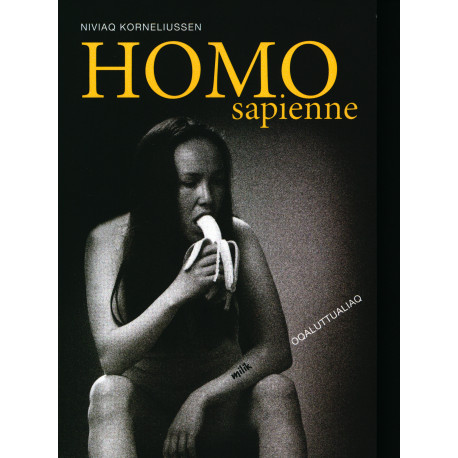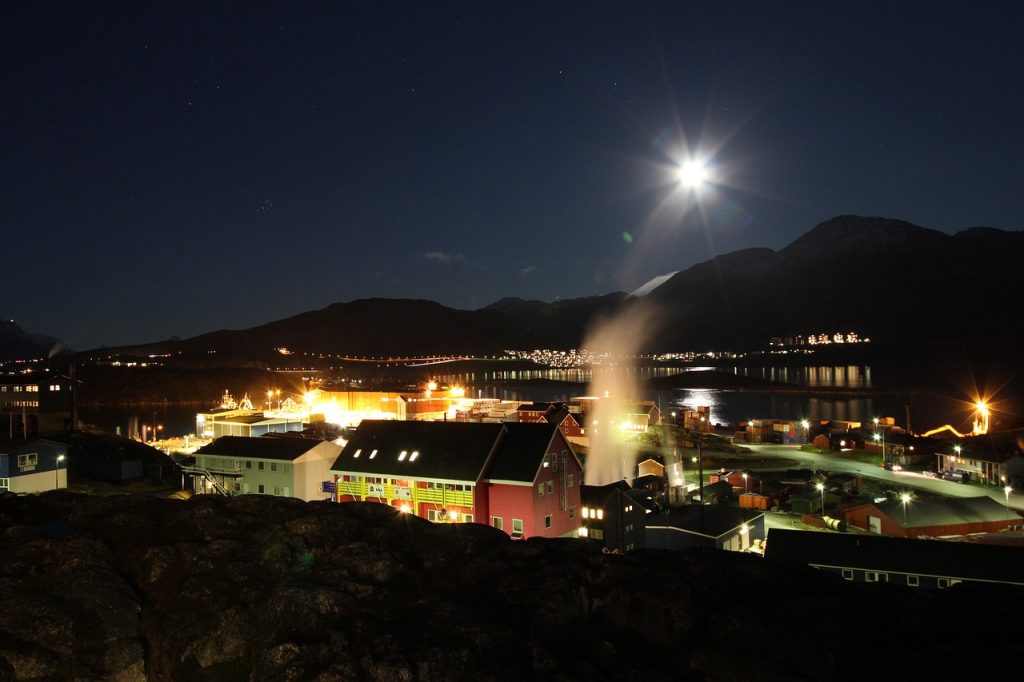It’s like I’m living someone else’s life, one that doesn’t fit
Oh, man. I tried so hard to like this, but I feel like that smiley face with the forced square smile. You know the one, right?
Niviaq Korneliussen’s debut novel follows five young Greenlanders, as they navigate identity, sexuality and relationships. Fia has just broken off her engagement with her boyfriend, declares herself “off sausage,” and starts exploring her attraction to women. She falls for Sara, an LGBTQ+ activist with her own emotional baggage. Ivik, Sara’s partner at the beginning of the novel, grapples with the growing realization of being transgender. Arnaq is the hard-partying wild child who uses alcohol and sex to escape her insecurities and childhood trauma. And Fia’s brother, Inuk, is a gay man caught up in a scandal with a closeted politician that sends him fleeing to Copenhagen.
I don’t want to drown, but I also don’t want to fight.
I just want to float, to be carried away by the current
The book earned much critical acclaim for its raw, unfiltered portrayal of modern Greenlandic youth and its bold, experimental style. Korneliussen was praised for her ability to authentically represent queer life in Greenland, blending languages and cultures in a way that feels uniquely Arctic, and hailed as one of the most exciting voices to emerge from the region.
I vividly remember seeing the iconic and provocative cover of the book (naked woman eating a banana) on display in the window of every bookstore in Denmark, when it first came out. Homo Sapienne is the original title, which is of course brilliantly clever. Why translators have chosen to replace this with the completely uninspired Last Night in Nuuk or the downright baffling Crimson for the English editions, is beyond me.

The novel was originally written in Greenlandic, and translated into Danish by the author. I went for the Danish audiobook, because it was available. But in hindsight, that was a mistake. I would not recommend the audio for this one. The very fragmented style – a mix of text messages, Facebook posts, and long run-on inner monologues – does obviously not translate well to audio. And the narrator is just not very good.
The Danish edition has frequent shifts between Danish and English, sometimes mid-sentence. While it does reflect how young people actually talk, I wonder if this aspect is completely lost in the English version. If you read the English version, please let me know!
I want to find myself,
but I don’t know who I am when I’m not hurting.
The story unfolds through the interwoven perspectives of the five main characters. And as it jumps between them, I often found myself disoriented and unsure who was speaking. To me the characters felt one-dimensional and entirely unrelatable. And I felt like nothing much happened in this book. They party, they have sex, they cheat on each other and break up and throw up and party some more. And someone’s sister has a child, which is painted as some great symbol of hope, but honestly at that point I had lost interest too much to care.

Large parts of this novel made me deeply uncomfortable. And to be fair, that is probably the intention. I don’t know if page after page of very graphic descriptions of someone being hung over and throwing up is your thing, but it is not mine. I came so very close to quitting this book, but the audio version is only three hours, so I powered through.
I do see that the novel can be characterized as raw and unfiltered. It is definitely that. But I don’t understand how it is “uniquely Arctic”, in any other way than the author being from Greenland. To me, this story of struggling youngsters could have taken place in any town anywhere in the world.
Homo Sapienne was just … not for me. Maybe you have to be queer to relate to this? Maybe this is a Gen Z book, and I am simply too much of a Boomer to relate? (I’m not a Boomer, I’m Gen X.) You tell me.




